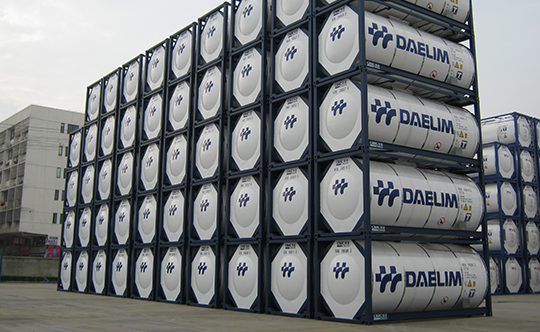The production of tank containers has recovered after falling by 30% during the Covid-19 pandemic in 2020.
The International Tank Container Organisation (ITCO) said that demand has recovered, resulting in tank container production reaching a high of 67,800 units in 2022.
ITCO’s 2023 survey shows that as of the start of 2023, there are 801,800 tank containers circulating worldwide, up nearly 9% from 2022 and 23% from the start of the pandemic in 2020.
The construction of new tank containers plummeted by more than 30% during the pandemic in 2020, then surged by 49% in 2021, and continued its growth last year, enabling the number of in-service tank containers to exceed the 700,000 mark.
More freight forwarders have also started transporting tank containers, with 240 companies as of January this year, up slightly from 235 a year ago.
ITCO said, “During the Covid-19 pandemic, supply chain disruption led to a shortage of tank containers – and, in turn, a demand by operators and beneficial cargo owners for equipment. This shortage resulted in a record demand for equipment with tank manufacturers, leasing companies and operators all achieving a particularly successful year in 2022.”
Stolt-Nielsen unit Stolt Tank Containers remains the largest tank container operator, with 47,000 units, followed by Hayer Group with 39,900 units, Newport with 38,500 units and China Railway Logistics with 27,500 units.
ITCO’s survey also showed EXSIF Worldwide remains the largest lessor of tank containers, with 70,000 units, followed by Eurotainer, with 55,000 units and Seaco Global, with 42,000 units.
ITCO noted, “Based on its successful growth in recent years, the industry is continuing to attract smaller players to enter the market – often offering tank container services in niche markets, such as Southeast Asia. However, existing operators also report a greater emphasis on the part of shippers to value relationships as a means to forge loyalty, quality and dependable supplies of tanks, moving away from the erratic spot market and on-line price focused competitive bidding.”
The trade body cautioned that the resurgence in tank container construction, and the delays in disposing of older units, could result in overcapacity.
ITCO pointed out, “Instead of disposing of older tank containers (or taking them out of operational circulation), older tank containers have in many cases been repaired and brought back into service. However, as in previous global recessions, growth in the global tank container fleet could mean an oversupply of equipment this year.”
Martina Li
Asia Correspondent







